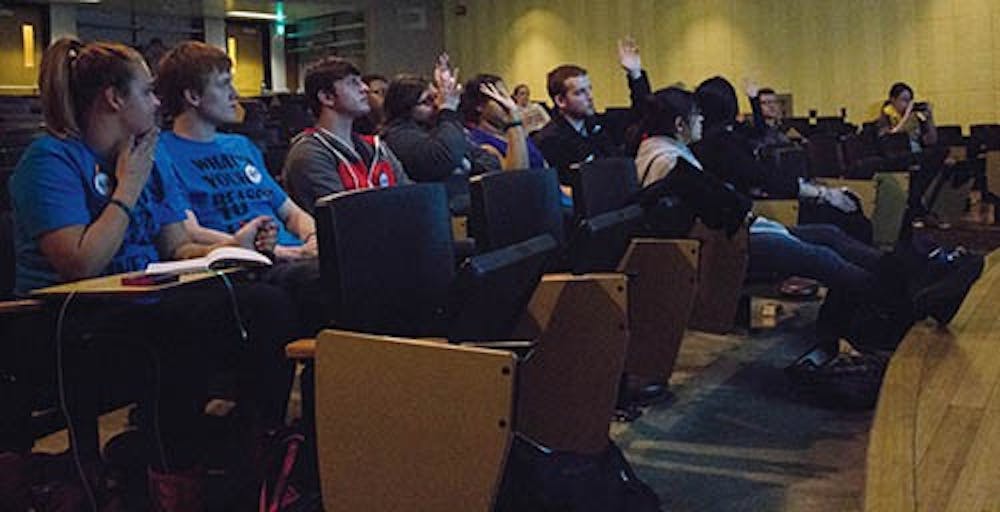A panel discussion composed of participants from diverse backgrounds addressed topics including cultural differences of body image, clothing and media portrayal as part of National Eating Disorder Awareness Week.
Two undergraduate and two graduate students shared their stories on the panel, each member coming from a different background.
Essence Vinson, a senior social work major and panel member, said what people see on TV affects their perceptions of body image.
“In the media, there are a lot of images of tall and skinny women,” Vinson said.
This message has not only permeated Western culture, but other countries abroad.
“With media here and back home, skinnier is better,” said Katerina Psarropoulou, a panel speaker who is a graduate international student from Greece.
Matlyn Rybak, a senior at Indiana Academy, said thinness, however, has not always been idolized by society.
“I read an old magazine, about women like Marilyn Monroe, where women were complaining because they had to put on weight in order to attract men,” Rybak said.
The ‘50s was a time that thinness was regarded as less attractive than having some weight. This perception is still held up, and even idolized, by some cultures today.
“In Asia, it is more acceptable, if not desirable, to be large. In Japan, I was just a goddess,” said Patrick Waring, a graduate student at Ball State and panel member. “In Hawaii, the kings and queens were large.”
Waring has lived in both Japan and Hawaii and shared his experiences with cultural perceptions. He said body image is in the eye of the culture.
These national differences can cause somewhat of a culture shock when traveling back and forth across borders. Psarropoulou said people ask her if she has gained weight whenever she goes home.
“Whenever I travel home, I’m very conscious about what I eat,” she said. “My mom and grandmother always made sure I ate and that I was not too skinny.”
Based on anecdotes by panel speakers, home is usually the place that people’s perception of body image originates.
Vinson said she came from a family that was used to “big hips, butts and thighs” and reinforced positive body image for her.
Weight was not the only insecurity panels discussed at Monday’s meeting. Luke Bonvillian, a junior international business major, said his height contrasted with societies gravitation toward tall men.
At 5 feet 8 inches, Bonvillian finds inspiration in his perceived shortcoming by finding other short people with who he can relate.
“My height is ideal for good divers and I used to dive, so that gives me a little bit of hope,” he said.
Even with all of the conflicting messages floating around in today’s society, the panel shed some light on the misconceptions about body image and the need for solid understanding amidst social pressure.
“It is important to educate and teach about what a healthy body is,” Psarropoulou said.


